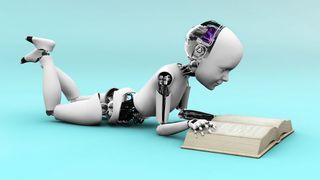Occupational Hygiene (OH) and Artificial Intelligence (AI)

(Image credit: Pam Bobitt, Shutterstock/Sarah Holmlund)
Real-time exposure monitoring, is not new and the idea has long been explored and debated in the science arena. The instruments that we use have a limitation on the amount of data and data analysis capabilities but we have seen great advancements in how these have improved over the years. From only allowing you to take one sample at a time to simultaneous monitoring and data capturing capabilities that can allow you to store and sometimes analyse multiple samples. However, the possibility of being able to know the exact concentration of a hazardous chemical agent, a mixture of hazardous chemical agents or a level of noise a person is exposed to at a particular time is what would be interesting to an avid occupational hygienist as much as it would interest a novice occupational hygiene assistant. This allows one to be able to solve so many problems which the full-shift or partial-shift sampling strategy struggles to solve. Even though real-time monitors have been in existence, what AI allows us to do is to be able to use this data collected by these instruments to develop models that can be used to predict exposures in real-time and thus issue warnings in real-time when hazardous conditions are present. It also allows us to be able to design work areas in such a way that we are able to pin-point during the design stage where areas of high dust or noise concentration can be anticipated and what control measures can be put in place and also run simulations to see if such controls will be adequate prior to spending any money on their implementation. I have always wondered how often our approach is more retrospective when dealing with exposures in occupational hygiene and how can we be able to predict incidents and accidents, high exposures or over-exposures before they even occur. AI allows us to do exactly that, with all the data that has been collected over the years, we will be able to predict areas of high silica dust (containing alpha silica quartz) exposure in a gold or coal mine operation. We will be able to predict areas of high noise exposure in all the phases of a power plant construction project and ways to mitigate it, in most cases without even taking a single noise sample. According to Bobbitt, P, (2017), "Personnel within this sector are already using predictive models like Bayesian Decision Analysis, which helps industrial hygienists incorporate professional judgement into the statistical analysis and interpretation of EHS data." She argues that this form of predictive analytics is rather quantitative than predictive and also predicts that, machines will do better than humans in terms of the level of accuracy of the predictions they will be able to achieve.
Worker protection informatics; according to Howard, J; refers to" the science and practice of determining which sensor information is
relevant to protecting worker safety, health, well-being, and productivity,
and then developing and implementing effective ways:
– To collect, validate, store, share, analyze, model, and apply the
information,
– To confirm achievement of the intended outcome from use of that
information,
– To convey experience to the broader community, contributing to
generalized knowledge, and updating standards and training."
There are many AI applications to occupational hygiene that one can envisage, being able to use a robot to collect data or conduct interviews using a standardized questionnaire for a health risk assessment, being able to have a machine that can share information on safety data sheets with employees or one that can share reliable and up-to-date first-aid information, notify the civil maintenance department of all the lights that are defective in the plant and provide them with the real-time lux levels and indoor air quality parameters for the specific rooms. All these are great applications of AI in occupational hygiene that one cannot wait to see them in full implementation. As many have already said that AI will once again give humans the time to be human again and move away from the mundane tasks; I cannot help but agree with these sentiments. And if you have ever conducted an illumination survey where you had to take over 500 measurements, still had to do data capturing, analysis and report writing; surely you will will agree with me too. Off-course there are issues such as robot ethics, legislation to govern and regulate AI applications,rights to information disclosure, internet connection issues and many others, but when the Wright brothers built an aeroplane, there were also numerous challenges and issues off which today hardly no one actually spends much time worrying about.


Comments
Post a Comment